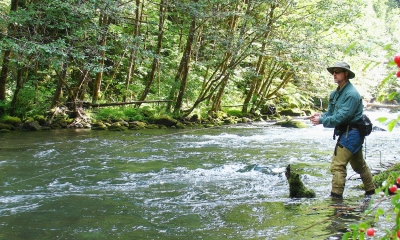
Greenling
There are two species of greenling off the Oregon coast. They are named for the habitats in which they can be found. Most fishes have just one lateral line along each side to detect movement, but greenlings, also known as sea trout, have five.

Types of Greenling

Features: The females are freckled all over with small reddish-brown to golden spots on gray to brownish background. Their fins are mostly yellowish-orange. The males are gray to brownish-olive, with irregular blue spots on the front of their bodies; each spot is surrounded by a ring of small reddish-brown spots. The inside of this species' mouths are yellowish.
Habitat: Kelp greelings can be found to depths of 150 feet. They prefer rocky inshore areas and are common in kelp beds and on sand bottoms.
Technique: It is best to target kelp greenlings by placing a line near the base of structures such as rocky shorelines, pilings, or in kelp forests during an incoming tide. They like clams, worms, sand shrimp, and mussels as bait.

Features: Usually greenish to brown with darker mottling, but most fish have bright red blotches on their sides. They tend to have dark bars or blotches on their fins, and the inside of their mouths are bluish.
Habitat: Their habitat is subtidal algal beds and rocky reefs from the Bering Sea to southern California.
Technique: Try fishing for rock greenlings from the shore as they are often captured in shallow, rocky areas. These fish have small mouths, so try a #4 or #6 hook to catch these daytime feeders.

